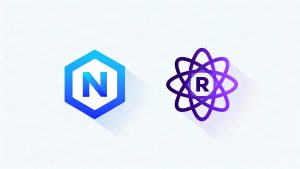Chrome has introduced a suite of built-in AI capabilities that empower web developers to integrate advanced features like summarization, translation, and language detection directly into their applications. Leveraging Google’s Gemini Nano model, these APIs run entirely on-device, eliminating the need for external API calls, keys, or third-party libraries.
Overview of Chrome’s AI APIs
With the release of Chrome 138, developers now have access to three powerful AI APIs:
- Summarizer API
- LanguageDetector API
- Translator API
These tools are designed to enhance web applications with local AI functionality while prioritizing privacy and performance.
Platform Requirements and Limitations
Before implementing these AI features, consider the following prerequisites:
- Chrome Version: 138 or later
- Supported Platforms: Desktop only (Windows, macOS, Linux)
- Unsupported Platforms: Android, iOS, ChromeOS
- Activation: Enable via
chrome://flags/#enable-ai-features - Hardware: Minimum 22 GB free disk space and 4+ GB VRAM
Summarizer API: Fast, Flexible Content Summaries
The Summarizer API generates concise summaries from lengthy text, supporting styles such as TL;DR, key points, headlines, and teasers. This flexibility allows developers to tailor summaries for various applications, from news aggregators to documentation viewers.
Key Use Cases:
- Generating quick overviews for articles or documentation
- Summarizing lengthy chat threads or emails in messaging platforms
- Supporting offline-first and privacy-sensitive apps by keeping data local
Sample Implementation:
javascriptif ('Summarizer' in self) {
const summarizer = await Summarizer.create({
type: 'key-points',
format: 'markdown',
length: 'short',
});
const summary = await summarizer.summarize(text, { context: "Sample context text." });
console.log(summary.output);
}
Developers can also track the model download progress to ensure a smooth user experience:
javascriptsummarizer.addEventListener('downloadprogress', (e) => {
console.log(`Downloaded ${e.loaded} of ${e.total}`);
});
LanguageDetector API: Seamless Multilingual Support
The LanguageDetector API identifies the most probable language of a given text snippet, enabling dynamic adaptation in multilingual environments.
Practical Applications:
- Automatically selecting spellcheck or keyboard layouts in web forms
- Routing messages for translation or moderation in chat apps
- Analyzing user-generated content for language-specific feeds
Sample Usage:
javascriptif ('LanguageDetector' in self) {
const language = await LanguageDetector.detect(text);
console.log(language); // e.g., "en", "es", "fr"
}
Translator API: Private, Real-Time Translation
The Translator API enables on-device translation between supported languages, supporting real-time and offline scenarios without relying on cloud services.
Ideal For:
- Live translation in chat or collaboration tools
- Browser extensions for instant translation of selected text
- Multilingual support in offline web apps and content moderation systems
Sample Code:
javascriptif ('Translator' in self) {
const translator = await Translator.create();
const result = await translator.translate('Voorbeeldtekst', { to: 'en' });
console.log(result.output);
}
Considerations and Best Practices
Experimental Status
- These APIs are currently experimental and documented on MDN.
- Availability is limited to Chrome and may evolve with future updates.
Hardware and Disk Space
- The underlying models require 1.5–2 GB of space, but Chrome mandates at least 22 GB free disk space and 4 GB VRAM.
- Insufficient resources may cause silent failures, resulting in no output.
Input Size Limitations
- Large documents may exceed the model’s context window.
- Developers should implement chunking and hierarchical summarization for best results.
Example Approach:
javascriptconst chunks = splitIntoChunks(longText);
const summaries = await Promise.all(chunks.map((chunk) => summarizer.summarize(chunk)));
const finalSummary = await summarizer.summarize(summaries.map((s) => s.output).join('\n\n'));
Expanding Use Cases for Chrome AI APIs
- Browser Extensions: Enable on-the-fly summarization or translation of highlighted text.
- Smart Input Fields: Detect and translate user input in real time, or adapt spellcheck automatically.
- Documentation Viewers: Dynamically generate summaries or translations for broader accessibility.
- Messaging Clients: Integrate live translation to bridge language gaps.
- Offline and Progressive Web Apps: Enhance user experience without cloud dependencies.
- Onboarding Flows: Automatically detect and translate for a personalized, inclusive experience.
Conclusion
Chrome’s built-in AI APIs offer robust, privacy-focused tools for summarization, translation, and language detection—entirely on-device. While these features are still experimental and demand considerable hardware resources, they represent a significant leap toward more intelligent, user-friendly web applications. For developers targeting desktop Chrome users, these APIs present a compelling opportunity to elevate user experience with minimal integration effort.
Read more such articles from our Newsletter here.



